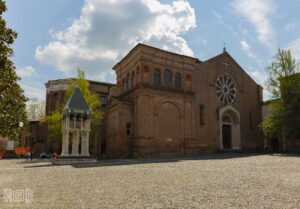Do you want to know the history and the curiosities about Piazza Maggiore? Discover the most important buildings that surround it!
The birth of Piazza Maggiore
Piazza Maggiore or Piazza Grande has always been the centre of city and religious life in Bologna, the beating heart of the city.
In 1200, the year in which its history begins, the Municipality of Bologna bought the land, in order to create an area with a double function. On one hand, it had to house all the commercial activities that since them were scattered throughout the city; on the other hand, the square would be a symbol of the importance of the municipal institution.
The old buildings were demolished, as well as the towers in the area. The square became the first one to be built after the fall of the Roman Empire: its importance derives precisely from this. In fact, at the time of the Roman occupation, the squares rose near the city’s Forum and basilicas, the most important places. From now on, in Italy developed the concept of the square as a meeting place.
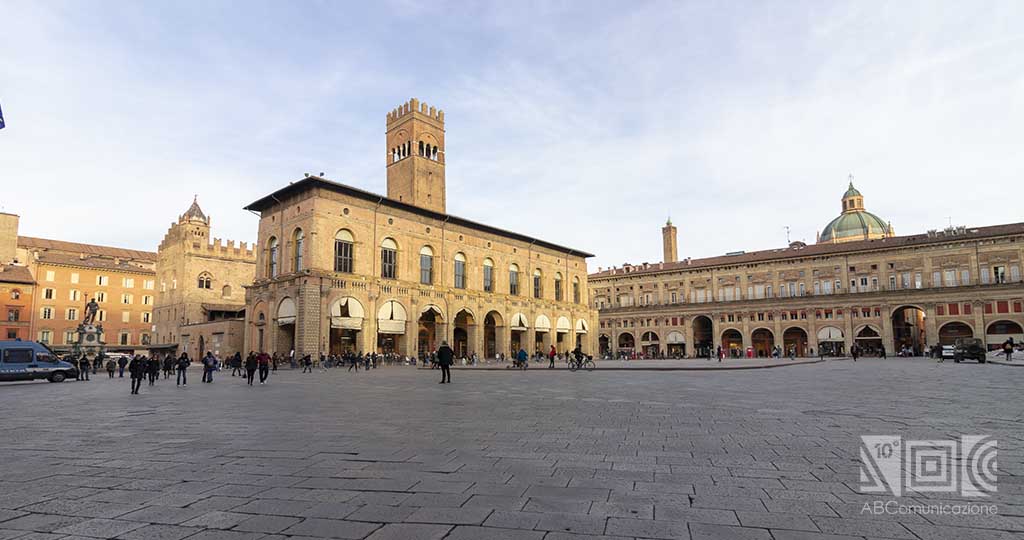
Recent transofrmations
In the 15th century, the square took its actual shape and, in the following century, it was modified at the behest of the Cardinal Carlo Borromeo. Thaks to this character, they added Piazza del Nettuno, with its iconic Fountain, and the Archiginnasio Palace.
Later, in 1860, the square was named after Vittorio Emanuele II until 1943 when his statue was moved to Giardini Margherita. From this moment, the square finally assumed its current name of Piazza Maggiore.
The crescentone, the pedestrian platform that you can see in the center of the square, was added later, in 1934. Here is a curiosity about its name: it would derive, in fact, from the bolognese crescenta, a typical savoury focaccia.
We point out the famous legend of Piazza Maggiore concerning the university students. The most superstitious ones should not cross the square diagonally, as it is said that it could lengthen graduation time or even prevent it. Did you know that there are a lot of legends regarding students? One of these concerns the Two Towers: discover it in our article Myths and Curiosities of the Two Towers of Bologna: Garisenda and Asinelli!

With its 115 meters of length, Piazza Maggiore is majestic and it houses the most important buildings of the medieval city. A part from the Church of San Petronio, which is not to confused with the Cathedral of San Pietro, Piazza Maggiore has many other historical buildings.
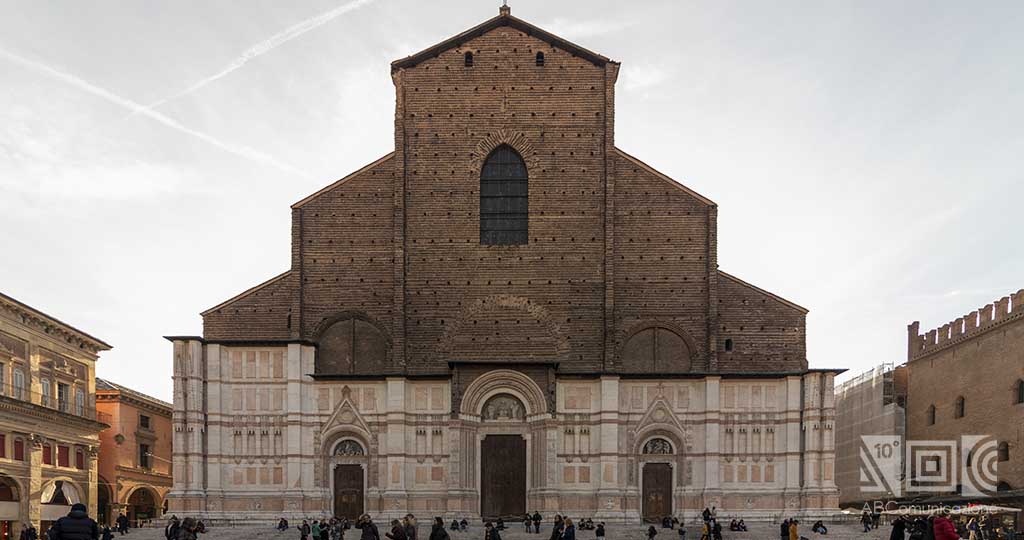
When visiting Bologna, going in Piazza Maggiore is a must! Discover which other monuments you cannot miss in our article Five things not to be missed in Bologna.
Palazzo d’Accursio
Palazzo d’Accursio or Palazzo Comunale is the headquarter of the town hall of Bologna since 1336.
Actually, its structures derive from the union of several pre-existing buildings, bought by the Municipality in the 13th century. The Palace takes its name from the owner of the house, Accorso da Bagnolo or Accursio, law professor of the Studium of Bologna. Speaking of which, did you know that the University of Bologna is the oldest of the western world? Read more in our article!
In the 15th century, after its renovation, an astronomical clock was added on the Accursio Tower, that for this reason now has the name of Clock Tower. It is able to show the position of the stars in relation to the Zodiac. In addition, they added as well a carousel representing the Madonna and Child and the procession of the Magi that moved every hour.
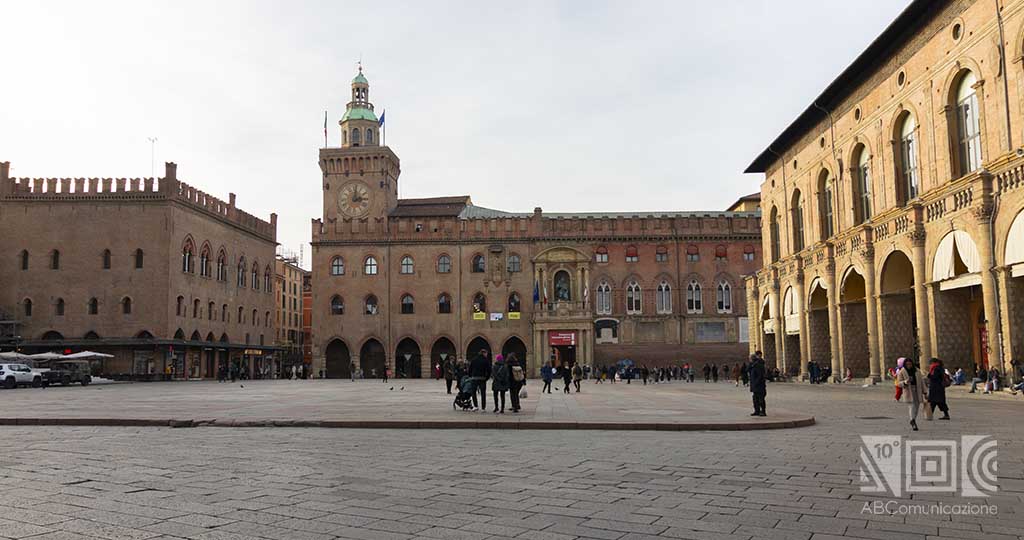
Palazzo d’Accursio has held several functions over time. In the past, it housed the Torrone Criminal Court and the city prisons. Instead, in modern times it hosted the Morandi Museum, before it was moved to the Mambo. If you want to deepen this topic, we suggest you read the article Museums in Bologna: a must-see heritage. It will give you a panoramic of all the patrimony of Bologna, that responds to all tastes.
Inside Palazzo d’Accursio they also keep documents that testify the historical and political events that took place in Bologna. Currently, on the ground floor of the Palazzo d’Accursio you can find the Salaborsa Library: discover in our article its incredible uses over time!
Palazzo del Podestà
Palazzo del Podestà is another historical building that faces Piazza Maggiore.
Built in 1200 AC, at the same time as the construction of Piazza Maggiore, the Palazzo del Podestà was the seat where the mayor and his officials took care of the public functions. In the middle of the 13th century, they added to the structure Palazzo Re Enzo and Palazzo del Capitano del Popolo: the three buildings were separated by the Voltone del Podestà, above which you can see the Arengo Tower.
This place hides one of the seven secrets of Bologna, the “unusual phone”: find it out in the article A journey through the Seven Secrets of Bologna.

In 1435, on the Arengo Tower was placed a bell, that is still present, called the campanazzo. It had the function of calling the citizens in case of extraordinary events. Moreover, under the Voltone del Podestà they held the public hangings: this place was not chosen by chance, but in order to be a warning for the citizens, due to its clear visibility from Piazza Maggiore.
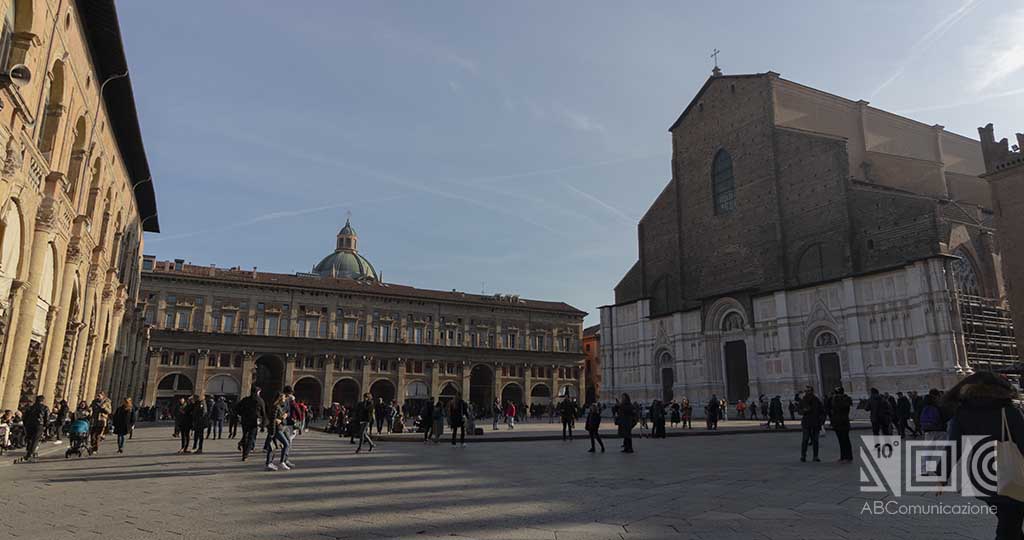
Few people know that in the past the “piano nobile” of Palazzo del Podestà was a public theatre called Teatro della Sala, frescoed by Adolfo de Carolis in the 20th century. Its decorations represented the great events of the history of Bologna. Among these, we can find the foundation of the city thanks to the Etruscan people and the creation of the Studium: unfortuntely, during World War II they were removed and never relocated.
Palazzo della Mercanzia
Two minutes of walk from Piazza Maggiore there is Palazzo della Mercanzia, also called Loggia dei Mercanti or Palazzo del Carrobbio. Built between 1384 and 1391 by Antonio di Vincenzo and Lorenzo Bagnomarino, the Palazzo della mercanzia initially was the headquarter of the Forum of Merchants and of some Corporations.
They used its structure as a customs building for many years, and it was the result of the union of three different structures owned by the Municipality of Bologna. By doing so, they created a loggia that served as a place to load and unload goods.
The Palazzo della Mercanzia also had another function: its rooms hosted the merchant’s Courthouse. It had to regulate all the disputes of commercial nature and it would provide for the maintenance and surveillance of the Navile canal.
An interesting curiosity concerns the white marble balcony on the facade. In fact, they publicy announced the verdicts of the merchant’s Court by this lodge, preceded by the ringing of the Lucardina Bell. In addition to that, those guilty of fraudulent bankruptcy were tied to a stake just outside the Palazzo della Mercanzia and they were exposed to public pillory.
From 1797, after the French occupation, it became the headquarter of the Chamber of Commerce of Bologna. Here, they managed all the commercial and mercantile activities. Currently, the Palazzo della Mercanzia is the seat of the Chamber of Commerce, Industry, Agriculture and Crafts of Bologna.
Bibliography
- Avanzato M.S., Guida ai palazzi di Bologna. Viaggio romantico tra gli edifici storici della città, Bologna, Edizioni della Sera, 2020.
- Costa T., Bologna dalla A alla Z, Bologna, Costa Editore, 2011.
- Menarini A., Vianelli A., Leggende e curiosità, Bologna, Tamari Editori, 1976.
- Roversi G., La Piazza Maggiore di Bologna. Storia, arte, costume, Bologna, Anniballi, 1984.




